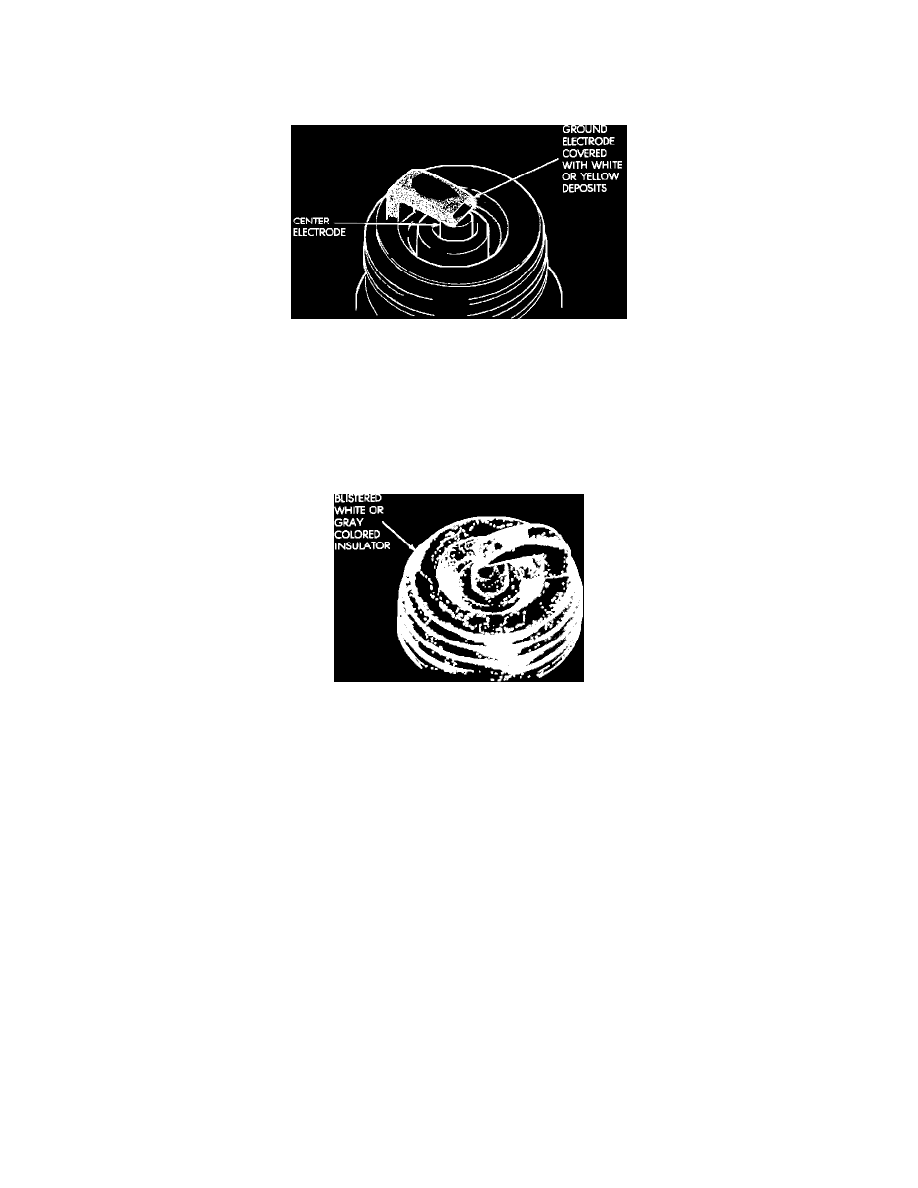RAM 1500 Van V6-239 3.9L Magnum (1995)

operating temperature of a particular type spark plug. Spark plugs are designed to operate within specific temperature ranges. This depends upon the
thickness and length of the center electrodes porcelain insulator.)
Scavenger Deposits
Scavenger Deposits
Fuel scavenger deposits may be either white or yellow. They may appear to be harmful, but this is a normal condition caused by chemical additives in
certain fuels. These additives are designed to change the chemical nature of deposits and decrease spark plug misfire tendencies. Notice that
accumulation on the ground electrode and shell area may be heavy, but the deposits are easily removed. Spark plugs with scavenger deposits can be
considered normal in condition and can be cleaned using standard procedures.
Spark Plug Overheating
Spark Plug Overheating
Overheating is indicated by a white or gray center electrode insulator that also appears blistered. The increase in electrode gap will be considerably in
excess of 0.001 inch per 1000 miles of operation. This suggests that a plug with a cooler heat range rating should be used. Over advanced ignition
Wet Fouling or Gas Fouling
A spark plug coated with excessive wet fuel or oil is wet fouled. In older engines, worn piston rings, leaking valve guide seals or excessive cylinder wear
can cause wet fouling. In new or recently overhauled engines, wet fouling may occur before break-in (normal oil control) is achieved. This condition can
usually be resolved by cleaning and reinstalling the fouled plugs.
